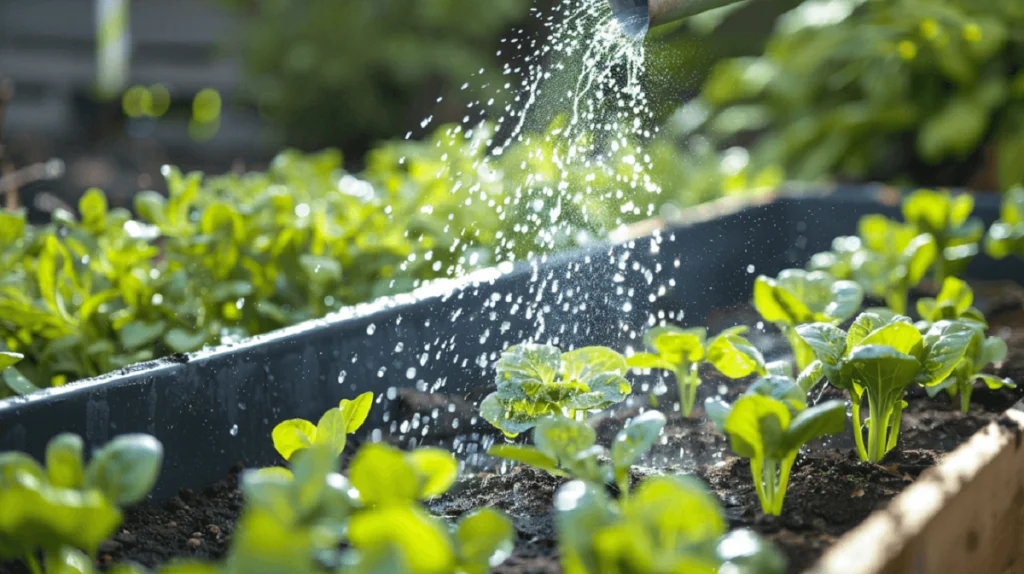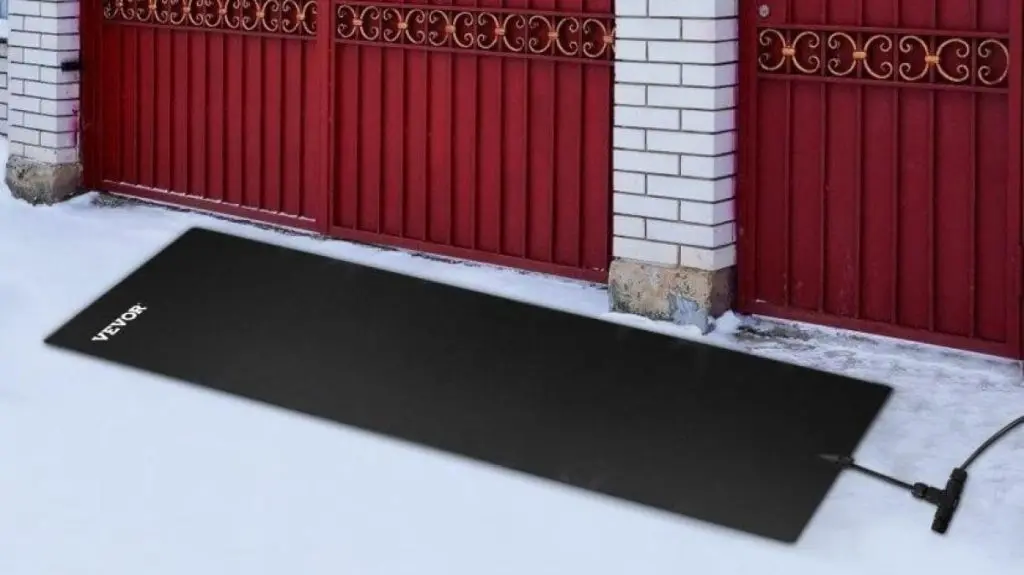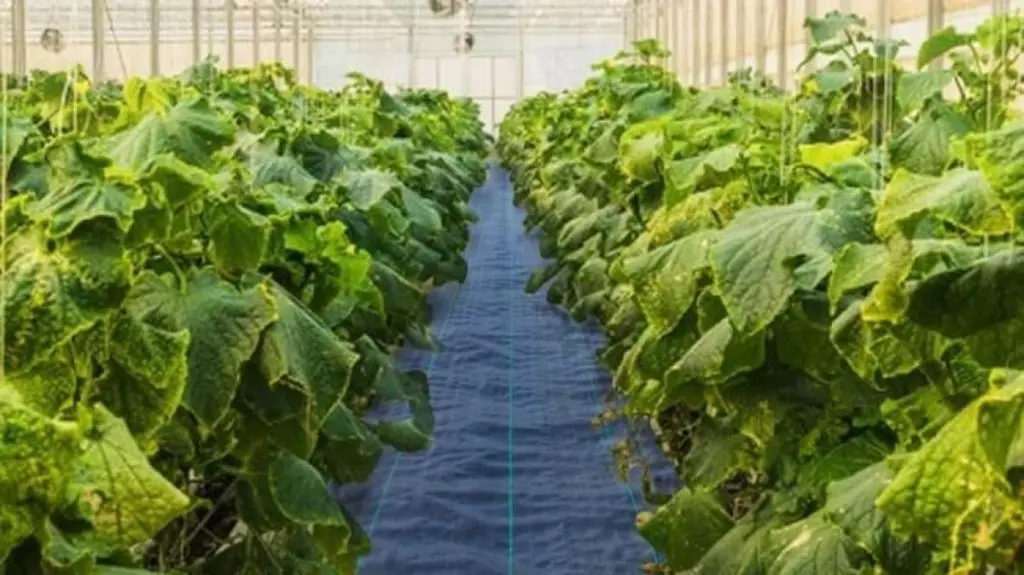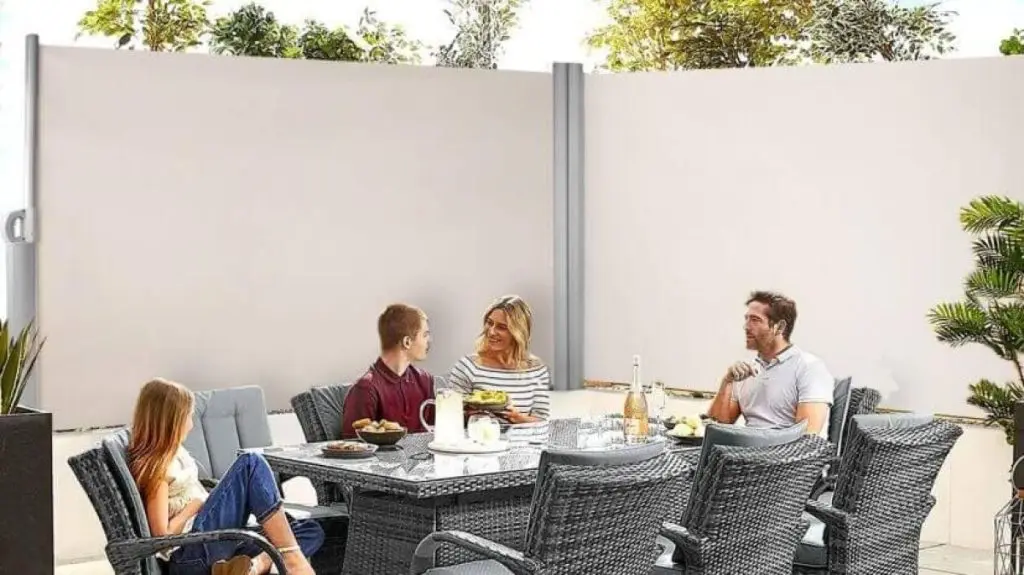Needless to say, watering is the key moment for the gardeners who have plants in the raised beds. Because even though they may spend a lot of money on materials, they have to deal with unusual challenges related to the soil and sun. Irrigation in raised garden beds is one of the best ways to counteract this problem.
Here, in this detailed article, you will learn about the craft and science of watering raised beds efficiently. Let us take a look at all watering forms. Old as well as new methods of watering and learn some necessary tricks to play the watering game like a pro.
Whether you are a beginner or an experienced gardener, this guide will enable you to maintain your raised garden beds in good condition with irrigation in raised beds.
Moreover, VEVOR-raised garden beds are an excellent option. This is because they are durable, easy to use, and they offer ideal growing conditions. So let us dive right into it!
Table of contents
Watering Raised Beds: Challenges & Solutions

Why Watering Raised Garden Beds is Different
Watering your raised garden beds can give you some unique headaches like faster-drying soil and limited root space for instance. Nonetheless, the VEVOR has good drainage.
Raised garden beds improve with drainage since it leads to good soil health so it solves some of these problems. Shall we continue on this comprehensive guide for watering raised garden beds?
Unleash Your Inner Plant Whisperer: Understanding Your Plant’s Needs
It is important to take into account specific watering requirements for your plants. Factors including the incidence of sun, plants, and growth cycle impact the water requirements accordingly. Helpful references like online step-by-step guides or plant care labels can be consulted to gather information about each type of plant’s necessities.
Watering Techniques for Raised Garden Beds
There are multiple watering techniques. From the traditional methods with a watering can to modern techniques with DIY irrigation systems for raised garden beds, we shall talk about them.
Master the Classics: Traditional Watering Methods
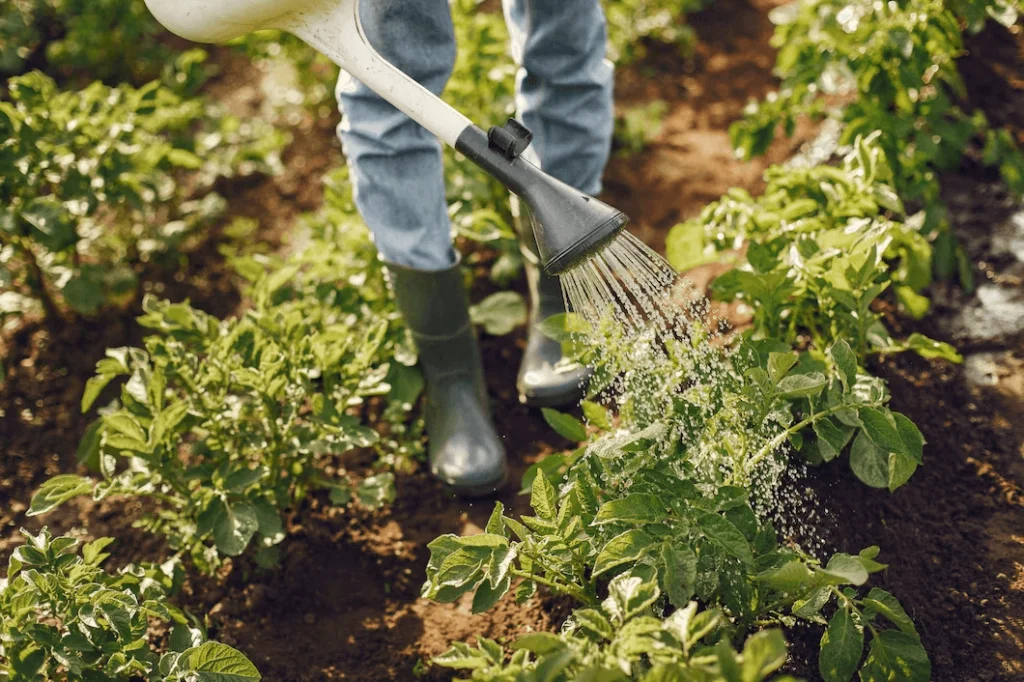
So, you might be wondering how to water raised beds. Everyone knows about the classic method of watering by hand with watering cans and hoses. But what are the pros and cons of this? And how does it help you? We will talk about this in the following.
Watering by Hand with a Hose or Watering Can
While the traditional watering methods by hand such as using a hose and watering can give one control over how much water is used, they are often time-consuming and lead to uneven watering patterns. They are efficient for small water beds but can lead to water wattage otherwise.
However, VEVOR raised garden beds are the optimal option as the accessible height makes hand watering a breeze. With just a push of a button, you get to do all parts of your task evenly without your body getting tired. This implies that watering is well done ensuring that plants get nutrients equally.
Soaking the Soil Deeply
Regular deep watering, once every week or so, can guarantee strong root development and reduce the incidence of water loss in raised garden beds. Through achieving soil fields, you provide water access essentially to roots where it is badly required. A soaker hose is such a good device for watering plants that it is placed at the soil surface.
This watering tool makes sure that water gets into the root of the plant very efficiently. This approach leads to healthier plant growth and water conservation by preventing evaporation and runoff.
Embrace Efficiency: Modern Irrigation Systems for Raised Beds
Irrigation is like magic watering tools for your garden. Saving water while keeping your pants happy and hydrated. With their efficient design, they are the ultimate convenience. This makes watering a breeze while conserving precious water resources.
There are many water systems for raised garden beds, answer shall go through these in this guide. This includes helping you DIY raised bed irrigation and understand what goes into it. So, how about we start right away?
Drip Irrigation Systems: The Champion of Raised Bed Watering
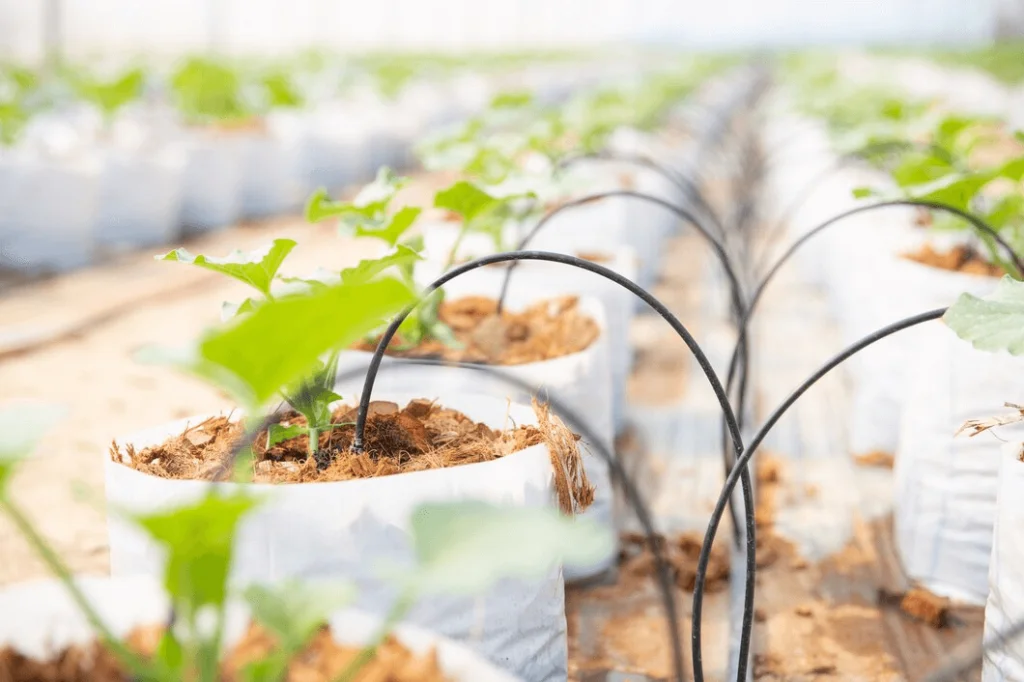
For the best efficiency and water conservation, consider installing a drip irrigation for your raised bed garden. Raised bed garden drip irrigation allows water to be delivered into the root zone of the plants with a high precision, thus, preventing significant water losses and making the root system of plants stronger.
VEVOR raised garden beds are designed to work with drip irrigation systems. This means that raised bed irrigation systems can be automated. Thus providing a chance for plants to get an ideal amount of water each time. Through drip irrigation, water wastage and time spent on irrigation processes are minimized and your garden productivity is highly enhanced.
Other Irrigation Options: Sprinkler Systems and Soaker Hoses
On the other hand, sprinkler systems as well as soaker hoses also act as alternative irrigation options but they have drawbacks compared to drip irrigation. Paths between plants or in areas between garden beds are watered too much with the sprinkler systems being inefficient since they focus on the whole of the planting bed rather than the plants themselves.
Soaker hoses can also be installed in an intensive manner, which will likely need more human involvement to get the hoses correctly positioned and adjusted. Besides, sprinkler systems and soaker hoses might not deliver water as accurately as drip irrigation, which may lead to plants being overwatered or underwatered.
Automate Your Garden: Smart Irrigation Solutions
The best practice that you could also incorporate for the ultimate convenience and efficiency is investing in a smart irrigation system to boot your raised garden bed.
The benefits of smart irrigation systems include automatic timers, remote monitoring of water supplies, and programmability of watering schedules depending upon weather conditions and the needs of plants.
These systems can be set up to have a connection with drip irrigation for raised beds. This can be used to automate the process of watering as well as save on the cost of water.
Smart irrigation systems involve paying more because they feature gadgets such as sensors and controllers. These devices monitor the soil moisture, weather, and plant water needs. They might also require some tech know-how or some professional input, thus making everything a bit confusing.
Nonetheless, they are good because they water your plants on their own and also they save a lot of water. They can be a bit pricey at the beginning and require some maintenance over time.
Pro Tips for Watering Raised Beds Like a Pro
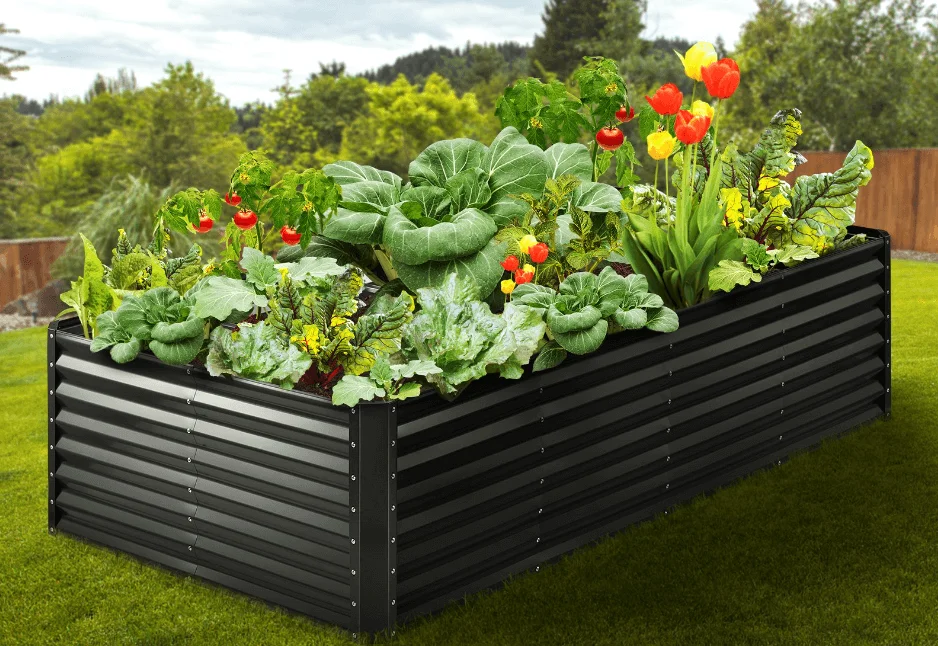
Time is of the Essence: When to Water Your Raised Garden Beds
Applying water at the best time, namely early morning or early evening, is very important for plants. The greenhouse conditions are once again impacted by the weather, plant type, and moisture factors, which determine the parameters of watering. The dug-deep “finger test” is usually a hand indicator for the moisture of the soil.
Listen to Your Plants: Recognizing Signs of Underwatering and Overwatering
Distinguishing the signs of underwatering (wilting, dry leaves) and overwatering (yellowed leaves, stunted growth) is very important for corrective actions. Pinpointing the problem at early stages ensures that the plant does not suffer damage.
Mulch Matters: The Power of Mulching Your Raised Beds
Among the advantages of mulching are the slow release of water, weed suppression, and maintaining the soil temperature. Organic mulch materials like wood chips or shredded bark are a good choice for raised beds.
FAQs about Watering Raised Garden Beds
How often should I water my raised garden beds?
Ans: As you know the frequency of watering your raised garden beds can vary in several aspects, such as the weather, the soil type, and which of the plants you’re growing. Usually, you will have to water your raised beds only when the soil seems to be too dry by touching them.
In the hot and dry weather, this can mean watering every day or every other day, while the cool rainy weather may call for less frequent watering. Don’t forget to modify your watering period which might be different for different plants.
How much water do raised garden beds need?
Ans: This will also answer the question, “How long should I run drip irrigation?” In drip irrigation, most plants need around 30 to 60 minutes. Raised beds usually need about 1 to 1.5 inches of water per week. However, factors like the plant type, soil depth, and weather conditions can be of vital importance to this process.
It is to the point that water should be watered deeply to be certain that the moisture is reached by the roots of your vegetables. Sometimes a rain gauge or a cup in the garden bed will help you to measure how much or little of the amount of water the beds receive in every watering session.
What is the best time of day to water my raised garden beds?
Ans: The best time to water your raised gardens is in the early morning or early evening. When it is hottest, watering the plant is a very – effective method and it also helps to minimize losses occurring due to evaporation thus enabling the plant to conserve moisture and endure the heat of the day.
Do not water during the hottest time of the day because it can increase the water loss from evaporation and may even burn the leaves of your plants.
What are the signs of underwatering and overwatering in raised garden beds?
Ans: Dark spots on the leaves, droopy or wilting leaves, dry and brittle stems, and ridged leaves may be signs of watering in raised garden beds. Such symptoms may lead to early death of the crops and as a result, productivity may be greatly reduced.
On the contrary, the symptoms of overwatering are quite different from that of underwatering. They include discoloration of leaves to yellow, a mushy root system, or in extreme cases, roots may start rotting, while the soil stays damp for a long time.
It is important to watch our plants for these signs and respond with the right watering techniques, so as to maintain the good health and vitality of your garden.
Conclusion
To sum it up, the technique of how to water your raised beds is critical for the well-being and thriving of your vegetables. Whether it is hand watering or drip watering system for raised beds, the choice should be led by your preference as well as the needs of your plants.
By practicing the right watering methods, you will be able to not only enhance plant growth but also conserve water and get a worthwhile harvest from your garden.
Thus, get knowledgeable about your plants’ watering needs in advance and choose an appropriate watering method. By using VEVOR-raised garden beds, you will be able to create a garden on a strong base that will allow your plants to grow well. So go ahead and get that easy guide to your beautiful garden today!

